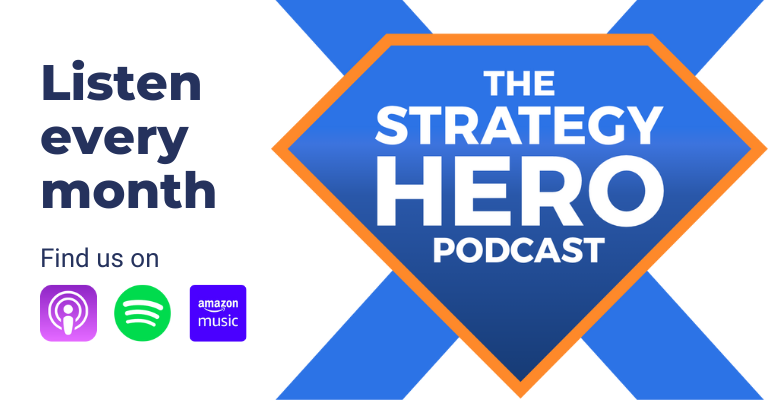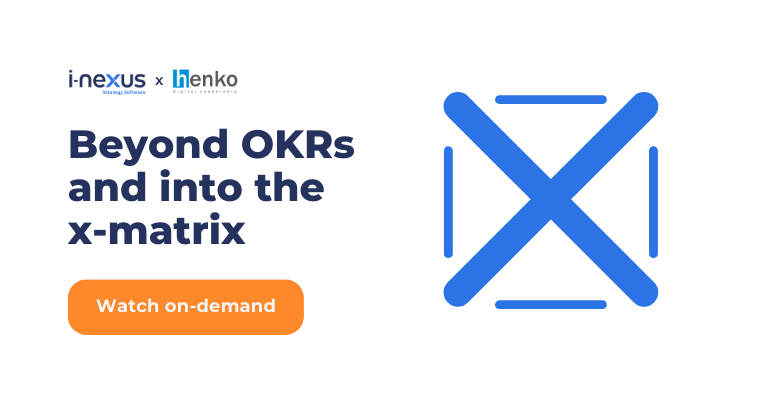As we looked towards our final episode of Strategy Hero season one, we aimed to go out with a bang, and we did just that with Philippe Guenet. Here's what I took from my time with him.
The reality that everything must end - albeit temporarily with Strategy Hero - was front and center as we found our way to the sixth and final installment of our ever-growing podcast series.
In this last episode, we wanted to talk to someone who started like you - a member of our audience - but now works directly with us and our clients, the renowned digital business coach Philippe Guenet.
Here's what I took away from my time with Philippe and our final episode: "bringing flow to the frontline."
It’s important to note that my opinions do not reflect those of i-nexus or Philippe Guenet.
Enjoy!
Why Philippe?
I think it's clear why Philippe was chosen, at least within the opening moments of this episode. Philippe is a fountain of knowledge. He's worked as a consultant and now as a coach, a completely different role, as he explained.
"It's not about telling people what different things they should do. It's helping them see things in a new light so they can make better choices, better decisions."
Isn't that refreshing? To know that someone like Philippe is there to coach, not to dictate. I got a glimpse of that throughout the episode.
There's a lot of knowledge there, but know-how must be passed on. Don't exclusively rely on external tools and help - empower your team.
Digital is more than transformation, and transformation is more than tech
As the episode gets into the core issue of empowering leaders around strategy, Philippe points out that many organizations view digital transformation merely as a technological shift.
This perception, driven by trends like big data, cloud computing, and AI, often leads to a sense of inadequacy, meaning companies seek consultants for a quick fix.
Philippe challenges the belief that consultants can instantly turn laggards into leaders. He emphasized that leadership and organizational alignment are the root issues, not just catching up with technology trends.
That's a point that shouldn't be glossed over. Technology is an enabler; it doesn't fill in for a lack of strategy or processes.
Philippe stressed the need for a bottom-up, emergent strategy, encouraging businesses to internally shape ideas and align themselves with the rapidly changing digital world.
"How can you lead in a way that, of course, needs agility so you can ride the opportunities that are emerging from the fast-changing pace of industry?"
The key to effective leadership?
The key to effective leadership is distributing engagement and involvement throughout your organization.
This takes fostering excellence, promoting collaboration among colleagues, and leveraging collective intelligence, perspectives, and sensor networks.
The goal is to enable every individual within the organization to actively contribute and identify potential opportunities by being attuned to subtle signals.
"The idea of flow is a constant dynamic where you will need to recompose, you will need to explore possibilities when those possibilities happen, then how do you direct capacity to that."
As I reflect, it's clear that Philippe feels it's important that an array of people are involved in shaping strategy to achieve true "flow'" within an organization.
Unlike the conventional Lean concept focused on the flow of work by reducing variability, Philippe highlights that in the context of complexity, where variability is inherent, the approach to flow must be dynamic.
This constant dynamic involves recomposing, exploring possibilities, and directing capacity based on emerging scenarios.
But it's important to note that Philippe cautioned that achieving and maintaining the perfect flow is fragile, as external changes, like COVID-19 and recessions, necessitate continuous adaptation, altering the dynamics of the entire process.
Making certainty out of something that is ignorantly uncertain
"I'm still seeing a lot of the old school strategy, and to be honest, and by that, I mean strategy and leadership that aims to create certainty out of something that is ignorant and ignorantly uncertain."
Philippe suggests that organizations often lack the foundation for optimal functionality and adaptability.
The status quo is that strategies are perfect plans, meticulously engineered and modeled, but Philippe urges we all acknowledge the imperfection in our perfectionism. Once committed to a roadmap, the focus shifts from strategy to delivery, often neglecting retrospective assessments of business case realization.
The classic mode of planning, executing, and tracking is too rigid. A perfect future vision is painted, but today's reality is anything but that. There's a disconnect between leadership's strategic vision and the unseen constraints within the organization.
Philippe advocates for a transformative shift in strategy, urging leaders to turn conventional views upside down. That's where he introduces the concept of continuous strategy. It's about getting more people involved in strategy, breaking free from the constraints of project-centric alignment instead of focusing on representing products or services. With this mindset, distributing strategy is anything but daunting.
He stresses the significance of aligning strategy with customer-oriented value chains, pushing organizations to understand their constraints and measure their level of excellence.
Agile transformation...without the agile part
There's often a misalignment between agile transformations and actual agility within organizations. Philippe dismantles the misconception that merely adopting agile processes leads to agility.
True agility, he argues, emerges from alignment and strategy, not just process.
He critiques adopting Objectives and Key Results (OKRs), suggesting that they often focus on delivery rather than strategic progress.
Instead, Philippe proposes a more practical approach: the X matrix, which connects strategy, measurement, and action in a continuous cycle.
This, he argues, fosters true agility by maintaining a just-in-time backlog and allowing for pivot when necessary.
To learn more, check out his webinar with i-nexus:
My takeaway
Strategy may be about our internal and external world, but you can only be successful by empowering your inner world.
Philippe was exactly what we needed to end our first season on the right note.
Simplicity with depth.
Thanks for being our sixth hero, Philippe.
Listen to the episode
Philippe's episode was the last episode of six in our opening season of Strategy Hero.
You can click here to listen to Philippe's episode or search "Strategy Hero" wherever you find your favorite podcasts.
About Strategy Hero
Published on the last Thursday of every month, the Strategy Hero podcast delves into the world of business strategy and transformation.
Each cast shines a spotlight on a Strategy Hero – inspirers, boundary pushers, and leaders of change from all walks of life – armed with practical advice on achieving your goals.
Episodes explore topics around operational excellence, Lean management, process improvement, change management, and much, much more. Available where all great podcasts live, listen on-demand today, and discover the Strategy Hero inside you.
About the host
James Milsom is Head of Marketing at i-nexus, but James is a storyteller. He’s the UK’s biggest Georgia Bulldogs fan (Go Dawgs!) and lives and breathes marketing.
The Strategy Hero podcast is his opportunity to bring some of his conversations with mentors, inspirers, and people anew to you every month.
He’s behind the content read and watched by people like you and lives to educate and help others.
If you’d like to learn more about him, connect with him on LinkedIn and subscribe to the Strategy Hero podcast today!




.jpg?width=352&name=KPIs%20(3).jpg)